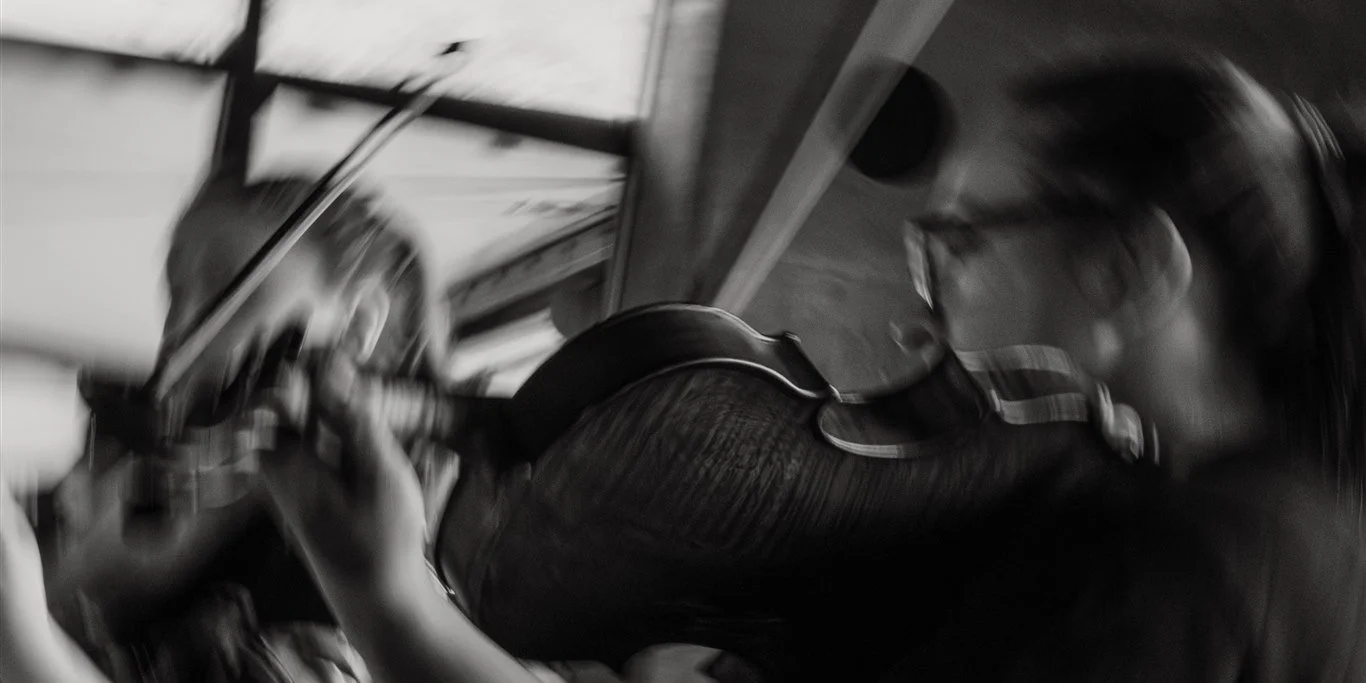WHORL | Exploring recurring patterns and motifs drawn from nature
AWE 2025 | Whorl
Saturday 11 October, 2pm & 5pm
Coronation Hall, Bannockburn
AWE arrives in Bannockburn with Whorl, a programme inspired by spirals and concentric forms found in nature. It weaves together music old and new with intertwining voices and organic musical structures.
We begin with Augusta Read Thomas and her Double Helix, a work commissioned for the launch of a public library. Written for two violins, this piece unfolds like a strand of DNA. Each violin moves with its own energy, at times pulling apart, at times coming together, always negotiating a shared space. The work captures the delicate tension between individuality and community, between independence and interplay.
We move next to Amy Beach’s Romance for violin and piano, Op. 23. Composed in 1893, this lyrical work is one of Beach’s early successes and remains a favourite for its warmth and expressive clarity. Its graceful lines and richly romantic harmonies offer a moment of intimacy in the programme, and a window into the voice of one of the first American women composers to gain international recognition.
Whorl includes the world premiere of a new work by Lauren Docherty, this year’s AWE Emerging Composer. In the run up to this year’s festival, Lauren has been mentored by John Psathas, this year’s Composer in Residence, whose piano quintet follows. This is a work shaped by the folk traditions of the Greek islands and by four composers who have influenced him deeply: Arvo Pärt, Alfred Schnittke, Jack Body, and J S Bach. This quintet is at once personal and wide-reaching, drawing on memory, lineage and tradition.
The programme concludes with the String Quartet in F major by Maurice Ravel, a work that stands among the finest of the 20th century. Ravel was not a prolific writer of chamber music, but this quartet shows his deep care for form and detail. He approached music with the precision of an architect, carefully constructing textures that seem effortless in their flow. The result is music of striking clarity and transparency, like a pane of glass through which we glimpse something luminous. Although Ravel left little written record of his compositional process, this quartet speaks volumes about his understanding of sound, form and feeling.
During our free AWE+ event, John Psathas will speak about Bach’s Chaconne and its influence on his own writing. The Chaconne itself will be performed, offering a rare chance to hear one of the great works of the solo violin repertoire in a chamber setting. A single four-bar phrase repeated and varied across 68 transformations, the Chaconne has been the subject of mathematical study and philosophical wonder. Its climax falls at the golden ratio, a natural point of balance where maths and nature meet.

